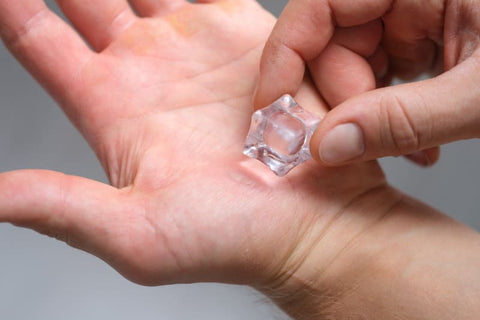Archery is a rewarding and exciting sport that requires a combination of skill, focus, and physical fitness. While it is generally considered a safe sport, certain injuries can occur if proper precautions are not taken, leading to serious archery injuries. However, this should not scare you away from it. As an archer, one way to simply minimize the risk is by practicing archery safety and taking appropriate precautions. The most typical archery injuries are in the arm and shoulder and can be avoided by using the proper technique and allowing for proper recovery. In this article, we will discuss the most common archery injuries and how you can avoid them.
Table of Contents
What Are The Most Common Archery Injuries?
Archery injuries can be caused by various factors, such as poor technique, improper equipment, overtraining, or a lack of physical conditioning. The most common archery injuries include tendinitis, strains, sprains, blisters, and calluses. These injuries can range from minor to severe and affect different parts of the body, such as the shoulder, elbow, wrist, back, neck, and fingers. Here’s an overview of some of the common archery related injuries.
Tendonitis

Tendinitis is an inflammation of the tendons that can occur in the shoulders, elbows, or wrists. Tendonitis of the elbow is the most common form experienced by archers and is referred to as “Archer’s Elbow”. This is often caused by repetitive motions of drawing the bow and improper technique, which can result in microscopic tears in the tendons. The symptoms commonly seen here are stiffness, tenderness, sharp pain, a dull ache-particularly when moving the injured area, and mild swelling in the affected area.
How To Prevent Tendonitis In Archery?
To prevent tendinitis, it is essential to warm up before shooting and to stretch your arms, shoulders, and back. Be sure to include specific strength training exercises to strengthen your archery muscles. Additionally, it is important to use proper technique and form to avoid overuse of muscles involved in bow drawing. Also, ensure your draw weight isn’t more than you can comfortably handle. Taking regular breaks and rest when you start to feel fatigued can also help prevent tendinitis.
Strains And Sprains

Strains and sprains are common injuries that can occur in the back, neck, or bow arm shoulder resulting from overstretched or torn muscles and ligaments. These injuries can be caused by poor posture or improper form. Symptoms include severe joint pain, stiffness, and limited range of motion around the affected parts.
Two types of strain that can be experienced include rotator cuff injuries and repetitive strain injuries. The rotator cuff refers to the group of muscles surrounding the shoulder joint that stabilizes the shoulder. As an archer, you put stress on your rotator cuff each time you draw the bow. Injuries to the rotator cuff muscles are usually the result of poor shooting mechanics and repetitive strain.
Repetitive strain injuries, on the other hand, describe an injury to the muscles, nerves, or tendons, particularly of the forearms and elbows or wrists and hands, due to repetitive motion and overuse. You may initially notice symptoms only while performing specific actions. But without proper treatment, symptoms may worsen and become a chronic injury resulting in constant or longer periods of pain and increased healing time.
How To Prevent Strain And Sprain Injuries In Archery?
To prevent strains and sprains, it is important to maintain good posture and technique while shooting. Among the several options of archery stances, choose the one that makes shooting most comfortable. Additionally, taking regular breaks and resting when you start to feel tired can also help prevent strains and sprains. Wearing appropriate and well-fitted protective gear, such as a back or neck brace, can also help reduce the risk of these injuries.
Blisters And Calluses

Blisters and calluses can occur on the fingers from the friction experienced when gripping the bowstring. This is a common injury that can be caused by using the bow for extended periods of time. One of the main symptoms is that the archer will have a reddish and sore finger. However, it could start tearing if not treated, leading to more serious cases that can prevent you from using your bow. To avoid such situations, it is advisable to treat them immediately.
How To Prevent Blisters In Archery?
To prevent blisters and calluses, it is important to use a finger tab or gloves to protect your fingers. It will help cover your fingers and act as a barrier between your fingers and the string. However, it’s important to choose comfortable gloves that won’t interfere with your bow draw, as that can hinder your ability to shoot accurately. Additionally, using a proper bow grip can also help prevent these injuries. Also, ensure you’re placing your fingers on the proper spot on the bowstring and avoid excessive finger tension while hooking the string.
While many archers go for gloves, some use sports tapes for their shooting. And, of course, that isn’t a bad idea. In summary, ensuring proper extra support and protection reduces the risk of injury.
String Slap
String slap is a common injury, especially among beginner archers, regardless of whether you are shooting a compound bow or a recurve bow. It occurs when the bowstring snaps against the inside of the bow arm upon release. Even experienced archers may occasionally experience string slaps. The chances of experiencing a string slap are increased by poor posture or when loose clothes or other items get in the bowstring’s way after it’s released. A string slap is not usually a serious injury and may only result in skin discoloration or a bruise at the point of impact, but it could be pretty painful. To avoid this discomfort and unsightly bruising, it is best to take precautions to prevent string slaps.
How To Prevent String Slap Injuries In Archery?
One main solution to string slap injury is to invest in good quality arm guards and, as much as possible, avoid wearing loose fitting clothing.
Below are other steps that, when practiced diligently, will increase your chances of enjoying your archery experience without string slaps:
- Work on your bow grip: Hold your bow with a relaxed yet firm grip, with the handle resting between your thumb and index finger and your knuckles forming a 45° angle.
- Adjust your brace height: A brace height that’s too short puts your wrist too close to the string, increasing the chances of a string slap. Ensure your bow brace height is kept at a standard for safe arrow fires.
- Practicing proper elbow rotation: Keep your arm out of the string’s path by rotating your elbow out and away.
Extra Tips To Avoid Archery Injuries

In this segment, we will discuss extra tips to help you avoid injury and enjoy the sport safely and injury-free. These tips will help you understand the best practices for preventing archery-related injuries and to make the most of your archery experience.
Equipment
It is important to use the right equipment for your level of skill and physical abilities. Using equipment that is too heavy or too advanced for your skill level can lead to injuries. To prevent equipment-related injuries, it is essential to consult a coach or professional to make sure you are using the right equipment and technique. Additionally, it is important to regularly maintain and check your equipment to ensure it is in good working condition and fit for use.
Overtraining
Overtraining is another common cause of injuries in archery. It is important to listen to your body and to give it time to recover. To prevent overtraining injuries, it is essential to set realistic training goals and to schedule regular rest days. Additionally, it is important to avoid pushing yourself too hard, especially if you are experiencing pain or discomfort.
Physical conditioning
Keeping your body in good physical condition is important for avoiding injuries in archery. This includes overall fitness, flexibility, and strength. A well-conditioned body will be less prone to injuries and will be able to perform better. To prevent injuries related to poor physical condition, it is essential to maintain a regular exercise routine that includes both cardio and strength training. Additionally, it is important to focus on exercises that target the specific muscle groups used in archery, such as the shoulders, back, and arms. Also, it is important to maintain a healthy diet and stay hydrated, as this will help keep your body in optimal condition.
Gradual progression
When starting out in archery, it’s important to start with lower draw weight and shorter draw length, gradually increasing as your strength and technique improve. Using an appropriate draw weight for your strength and skill level will help prevent overuse injuries and allow your body to adapt to the sport gradually.
Proper warm-up
Before shooting, it’s essential to warm up your muscles to prepare them for the activity. This can include light cardio, such as jogging in place and stretching exercises for the shoulders, back, and arms.
Avoid over-drawing
Overdrawing can put unnecessary stress on the shoulder, elbow, and wrist, increasing the risk of injury. It is important to use a bow with the correct draw length for your body size and to avoid over-drawing.
Proper stance and footing
Maintaining a proper stance and footing while shooting can help prevent injury. This includes keeping your feet shoulder-width apart, keeping your back straight, and keeping your weight evenly distributed between both feet. Poor posture can also lead to injury and affect your accuracy. Make sure you keep your back straight, shoulders relaxed, and head up when you shoot.
Listen to your body
Archery is a sport that requires a lot of focus, but it’s essential to listen to your body when it tells you to take a break. If you feel pain or discomfort, stop shooting immediately, and rest until you feel better.
Can I Bypass Archery Injuries If I Follow The Right Practice Techniques?
Yes! By improving your form and following the right archery safety techniques, you have a good chance of bypassing archery injuries and enjoying a safe archery experience. To avoid injuries like blisters, practicing the proper drawing techniques will be particularly helpful.
What’s more? There are a couple of techniques you must not gamble on. These techniques will improve your archery shooting.
Final Takeaway
Archery injuries are common, but they are avoidable. Ways to avoid them include perfecting your stance and draw technique, avoiding overuse of your shoulder and arm muscles, using an appropriate bow weight, and regularly exercising the muscles used in archery. With the guide above, you should be able to know how to deal with the risks that come with archery.








![Air gun 101: The differences between .177 & .22 – Which jobs they do best ? [Infographic]](https://airgunmaniac.b-cdn.net/wp-content/uploads/2024/11/1773-218x150.jpeg)



































